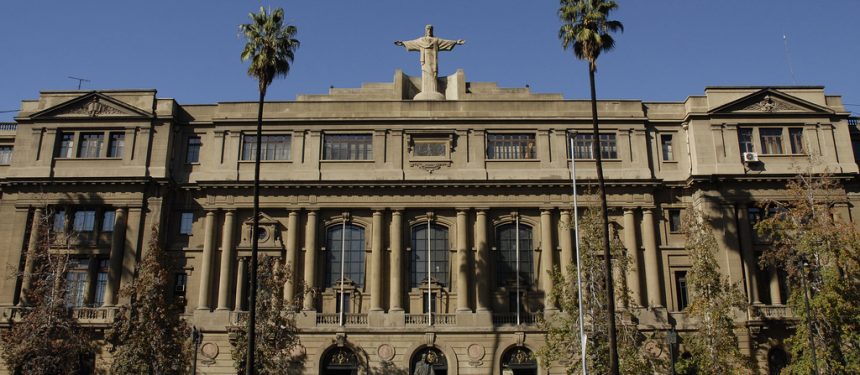International student enrolments across Chile showed modest growth in 2016, with most degree seeking students originating in neighbouring Latin American countries and study abroad growth driven by students from Europe and North America.
News and business analysis for Professionals in International Education
Have some pie!
Chile sees growth in foreign and exchange students
 Pontifica Universidad Católica de Chile was the top recipient for both foreign degree seeking and international exchange students in 2016. Photo: Pontificia Universidad Católica de Chile.
Pontifica Universidad Católica de Chile was the top recipient for both foreign degree seeking and international exchange students in 2016. Photo: Pontificia Universidad Católica de Chile. According to the second annual survey from SIES (Servicio de Información de Educación Superior) degree seeking international students in the county reached 19,219 last year, up 674 students from 2015’s figures and accounting for about 1.5% of all higher education enrolments.
More than half (54%) of degree seeking international students were residents in the country before starting their studies, many of whom originated from the country’s largest student source markets: Peru, Colombia, Ecuador and Bolivia.
“Universities are looking for bilateral partnerships with other countries”
“There are many students that come from neighbouring countries, for example from Peru,” remarked Talia Haim, coordinator at Learn Chile, a consortium of 21 higher education institutions.
“They could have moved here as a child or be children of immigrants who have residence in the country, so when they go to study they’re considered international students even though they were already living the country.”
More than three-quarters of degree seeking students (76.5%) come from South America.
Most degree seekers in the country (63.3%) study at universities, with private universities attracting 31% of foreign students, more than both the state-owned or private universities in the Universities of the Rectors’ Council (Cruch) group of institutions, which were founded before the 1980s.
Pontificia Universidad Católica de Chile and the Universidad de Chile were the top recievers of foreign students in 2016.
Meanwhile, around a quarter of degree seekers were enrolled at a professional institution and the remaining 10% at a technical training centre.
Undergraduate courses were the most popular among foreign students, led by commercial engineering and business degrees.
Exchange student enrolments also rose in 2016, totalling 8,703 – up from 7,993 students in 2015.
The profile of exchange students in Chile is, however, starkly different for the long-term foreign student. Most come to the country to study for three to six months, according to SIES, and 99% are enrolled at universities.
Private universities attract about 40% of exchange students while private Cruch institutions enroled 36% and state-run Cruch universities attracted 24%.
Pontificia Universidad Católica de Chile, Universidad de Chile Pontificia and Universidad Católica de Valparaíso were the top recipients of exchange students last year.
Europe sent 40% of exchange students to Chile led by Spain and France while North America accounted for 38% , mostly from the US and Mexico, and South America 14%, mostly from Colombia.
Since it was formed in 2013, Learn Chile has been focused on attracting exchange students mostly from Europe and North America.
“Universities are looking for bilateral partnerships with other countries,” said Haim. “Ninety percent of exchange students come to the country through these institutional agreements.”
For the 20 universities and one professional institution in Learn Chile, growth in exchange students exceeded the government’s 2016 statistics, up around 10% according to Haim.
“We hope to continue growing annually between five and 10%,” she commented.
Despite the dominance of universities in attracting exchange students, demand from neighbouring countries for professional training has seen exchange numbers rise at professional institutions as well.
“They’ve seen more growth than what some universities are reporting, even though overall numbers still show the universities are seeing the most growth,” Haim said.
“We’re hoping to recruit postgraduate students from Latin America mostly because of the language barrier”
“IP’s tend to offer programs that are shorter, more technical and sometimes cheaper so students tend to come from Peru, Colombia and around Latin America more than from Europe.”
And answering the growing demand from Latin America for degree programs, this year Learn Chile will launch a new campaign to attract full-time postgraduate seeking students from the region.
“We’re hoping to recruit postgraduate students from Latin America mostly because of the language barrier,” she said. “Students from North America and Europe come and do short programs. The postgraduate students will be the opposite.”
The group has its first recruitment fair in Lima in October.
In 2016, the most popular postgraduate degree was a master’s in business administration.
Still looking? Find by category:


